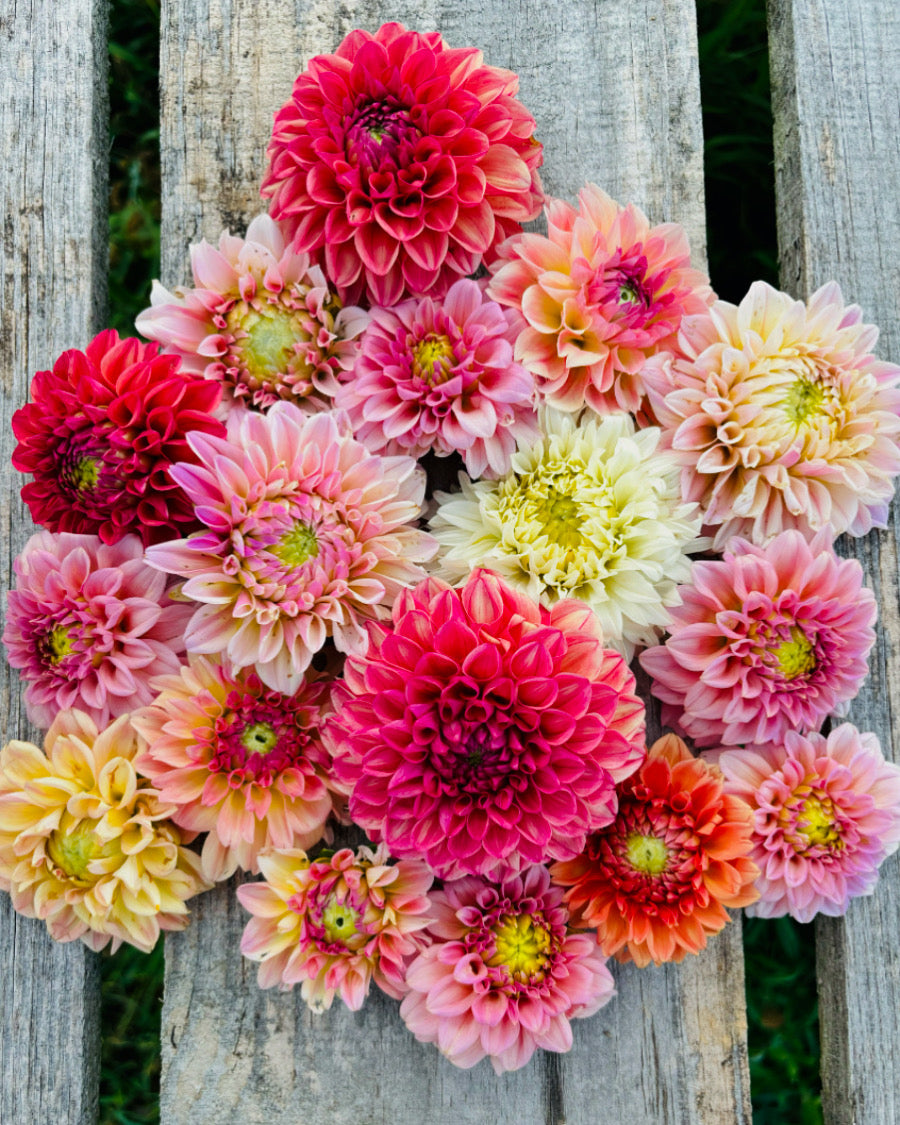
Why Dahlia Cuttings Might Be the Secret to Superior Blooms
Share

Dahlias are beloved for their stunning variety of colors, shapes, and sizes, making them a favorite among flower farmers, gardeners, and florists alike. When it comes to growing dahlias, there are two common methods to start your plants: tubers and cuttings. While tubers have long been the traditional choice, cuttings are quickly gaining popularity—and for good reason.
As a flower farmer passionate about growing the most vibrant, healthy blooms, I’ve discovered that dahlia cuttings have some clear advantages over tubers. Let’s dive into what makes cuttings the better choice for your garden.
What’s the Difference Between Dahlia Tubers and Cuttings?
- Dahlia Tubers: These are essentially the storage roots of the plant. Each tuber has a "crown" with growth points (called eyes) that sprout into a new plant.
- Dahlia Cuttings: These are stem segments taken from an actively growing dahlia plant, usually in early spring. The cuttings are rooted in soil or water and grow into full plants.
Both methods will produce dahlias, but there are some key differences in their performance and overall benefits.
Why Dahlia Cuttings Are Better
-
Faster Growth and More Vigorous Plants
Dahlia cuttings are often more vigorous than tubers because they come from the freshest, healthiest parts of the plant. While tubers can sometimes be slow to sprout or prone to rot, cuttings hit the ground running, establishing roots quickly and producing strong, healthy stems. -
Disease-Free Starts
One of the biggest advantages of cuttings is that they’re less likely to carry diseases. Tubers, especially when stored improperly, can harbor pathogens or pests. Starting with cuttings reduces the risk of introducing diseases to your garden, giving you healthier plants from the start. -
Higher Yield Per Parent Plant
With tubers, each piece with an eye produces one plant. In contrast, a single dahlia tuber can produce multiple cuttings—each of which grows into its own plant. This means you can maximize your investment in premium dahlia varieties by creating more plants from fewer tubers. -
More Uniform Blooms
Plants grown from cuttings tend to produce blooms that are more consistent in size, shape, and color. If you’re a florist or flower farmer looking for uniformity in your arrangements or sales, cuttings can be a game-changer. -
Space-Saving
If storage is a concern, cuttings are a more compact option than tubers. Instead of keeping bulky tubers in storage over the winter, you can keep just a few mother plants alive in a greenhouse or bright indoor space and propagate new plants as needed.
But What About Tubers?
Tubers still have their place, especially for gardeners who prefer traditional methods or want to save their own stock from year to year. However, they can be finicky:
- Storage Challenges: Tubers need to be stored at the right temperature and humidity, or they risk drying out, rotting, or sprouting prematurely.
- Limited Multiplication: Unlike cuttings, each tuber produces just one plant, limiting your ability to expand your collection.
- Greater Risk of Disease: Diseases like crown gall or viruses are more common in tubers, especially if they’re passed between growers.
How to Get Started with Dahlia Cuttings
If you’re ready to give cuttings a try, here’s a quick overview of how to propagate them:
- Choose a Healthy Mother Plant: Start with a strong, disease-free tuber and grow it indoors in early spring to produce shoots.
- Take Your Cuttings: Once the plant has several shoots, use a clean, sharp knife to cut just below a leaf node.
- Root Your Cuttings: Place the cuttings in moist soil or water, keeping them in a warm, bright spot until roots develop (typically 2-3 weeks).
- Transplant and Grow: Once your cuttings have strong roots, transplant them into your garden or pots.
The Bottom Line
While both tubers and cuttings can produce beautiful dahlias, cuttings offer a host of advantages, from disease resistance to higher yield and more vigorous growth. If you’re looking to elevate your dahlia game—whether for your own garden or a flower business—cuttings might just be the way to go.
Ready to give it a try? You’ll not only grow gorgeous flowers but also save space, reduce disease risk, and get more plants for your efforts. What’s not to love?
Happy growing!
Amanda Eichelberger
Bountiful Blooms Farm
